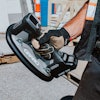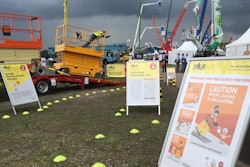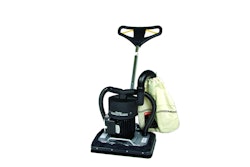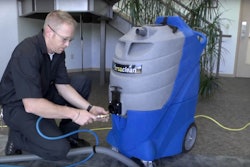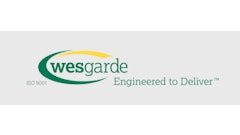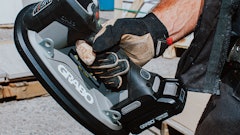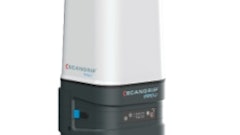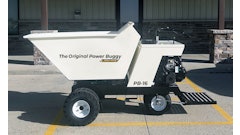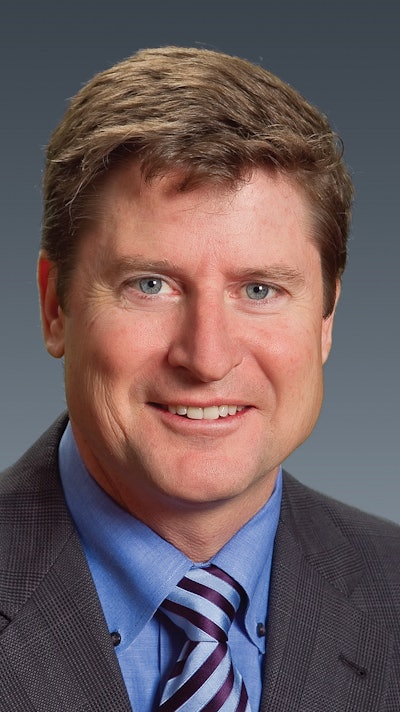
Rental: What do you see in your crystal ball for the aerial market?
Matt Fearon, president of Genie/Terex Aerial Work Platforms: The long-term prospects for the global aerial work platform industry continue to be positive and will be for a long period of time. The adoption of aerials still has a long way to go, mostly in Asia. North America and Europe are our biggest markets today but if you look at annual year-over-year growth, from a percentage standpoint, it’s other places that are really growing. They’re not really moving the needle today, but I think the trend will continue. We're seeing other players enter the market because they’ve studied it and seen it has legs. It's a cyclical industry but it will continue to grow.
Rental: What about in the short-term future?
Fearon: From a sales perspective in North America, we're still working our way through the replacement cycle. People didn't buy much fleet in 2009-10. They aged their fleets and from a manufacturer's standpoint, we’re now seeing a temporary dip that will be followed by some really nice growth. We think 2017 will be the bottom, with acquisitions going up 2018. That being said, I’d say there's a much more positive sentiment in the North American market very recently. You could feel it at The Rental Show and CONEXPO. People are just feeling better.
Rental: What do you think is the reason?
Fearon: Talk about infrastructure spending has got a lot of people feeling like they better get ready. Rental companies are getting more bullish about what their fleets should look like. We're also seeing a stabilization of oil prices and wells are firing back up again. We know the replacement cycle is real and we're watching all the signs so we’re in a position to react and stretch our manufacturing capacity to meet demand, but in the very near term, rental rates have to go up and stay up.
Rental: Explain why rates are so crucial to the near-term growth of the aerial market.
Fearon: Rental rates have not been doing well and the fleets that rental companies have are still relatively young. From a manufacturer's perspective, rental companies have to be able to see that if they add fleet they'll get a return on it. All the positive sentiment is good but it needs to carry through because there’s this underlying replacement cycle.
Rental rates that companies achieve in March, April and May kind of set the tone for rest of the year. Rental companies need to have rate discipline while manufacturers need to have discipline around how much inventory we have. We need to make sure the market isn’t saturated so it can be possible for our customers to get the rates.
Rental: How much do you think the newly elected Trump administration has to do with the positive sentiment in the industry?
Fearon: It seemed like the positive sentiment picked up back in December, when people started talking more about infrastructure spending. There’s a lot of optimism, but there’s no money behind it yet. But the talk about it has people thinking they should get positioned for the possibility of it. So I think it does have something to do with Trump's campaign promises. You can see the effects in how stocks are performing... just look at Terex and United Rentals, for example. We're seeing the "Trump Bump" first-hand.
Rental: You alluded to new competitors in the market, such a JCB's entrance into the aerial space. What's your reaction?
Fearon: We’ve known about it for a while. JCB is definitely a respected player - they're the third biggest in the world in construction - so it's a positive sign for our industry. But having a new competitor is nothing new. The thing we’ve got going for us is we’ve been doing this for 50 years. We are completely focused on our aerial work platform product portfolio, completely focused on rental. We're not going to have a distribution fight because we go straight to rental. And we have a global footprint with experienced aerial work platform teams in North America, Europe and China. Instead of using the big bang approach, we’ll keep listening to customers and figuring out how to improve our products year after year. This gives us a pretty big advantage.
Rental: What product trends are you seeing?
Fearon: The biggest trend stems from new ANSI/CSA standards and our decision to use the changes as an opportunity for innovation. We're pushing the capacity on the machines using a higher level of electronics and that will go through the whole boom family over the next couple of years. We think that’s going to be a differentiating factor.
We'll continue to see more hybrid technology and more electric drives moving deeper into our scissor lines and boom products. Also, there will be more focus on telematics. The entire industry is conceptually embracing the technology but we're all trying to figure out how to translate it into improving our customers' returns. This is a great opportunity for rental companies and manufacturers.
Rental: There have been a lot of changes at Terex. How do you see things progressing?
Fearon: Our CEO, John Garrison, implemented the Focus, Simplify, Execute to Win philosophy, and going from five segments to three was part of that. I think he’s made an incredible amount of progress in the 15 months he's been with the company. From a simplify standpoint, John said let’s get focused on the three segments we have: AWP, Cranes and Material Processing. The cranes business is very tough right now, so we're doing a lot of simplifying there. We're much more strategic now and the goal is to run our businesses as market leaders, which we are. I think Terex has changed dramatically for the good. It definitely is more focused, simpler, and we're driving initiatives under "Execute to Win" that really make sense.




